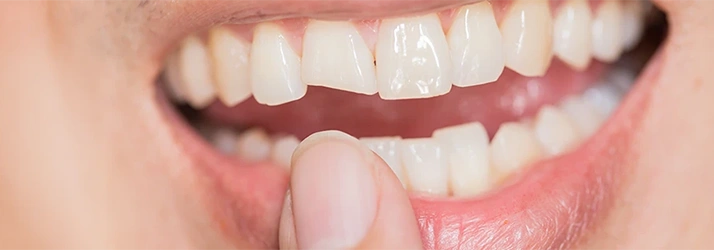4 Steps to Take If You Have a Cracked Tooth

Enamel — the outer protective layer of your teeth — is the strongest substance in your entire body, trumping even the strength of your bones. However, even strong things have limits, and your teeth can still crack and chip.
A cracked tooth can happen suddenly due to acute trauma or slowly due to chronic teeth grinding (bruxism), nail-biting, or ice chewing.
Whether your tooth crack is subtle or obvious, symptoms of a cracked tooth can include tooth sensitivity, pain while eating, and general tooth and gum discomfort that comes and goes.
At our practices in Hickory NC and Statesville NC, endodontist Robert Scott Nance, D.D.S., M.S., P.A., specializes in saving damaged teeth. To increase your chances of saving a cracked tooth, take these steps before getting to our office for treatment.
In this month’s blog, we discuss what you need to know about treating and saving cracked teeth, including four all-too-important steps you’ll need to take before arriving for professional care.
What to do when you crack a tooth
As soon as you notice symptoms of a tooth crack, book an appointment with Dr. Nance. Even if your tooth crack isn’t severe, any amount of damage to your tooth leaves it vulnerable to harmful and infectious bacteria.
After calling our team for an appointment, take these four steps to care for your tooth:
- Rinse your mouth with saltwater
- Cover any jagged or broken edges with wax paraffin or sugarless gum
- Take over-the-counter pain relievers to reduce discomfort
- If you have to eat, eat only soft foods that don’t require biting and chewing
Once you arrive at our office, our team can walk you through the next steps for treatment.
How we treat your cracked tooth
The type of treatment we use to repair and save your cracked tooth depends on the severity of the damage.
For a mild or moderate crack, Dr. Nance fills in the chips and cracks and covers the affected tooth with a crown to protect it from further damage. If a small piece of your tooth breaks off, Dr. Nance can put your tooth back together with a special dental reparative substance.
If your tooth crack is severe, has reached the inner portion of your tooth that contains nerves and blood vessels, or has led to an infection, Dr. Nance needs to perform root canal therapy to remove the damaged and infected tissues and seal the affected tooth.
As soon as you realize (or even suspect) a cracked tooth, call your nearest office location to schedule an appointment for prompt treatment.



